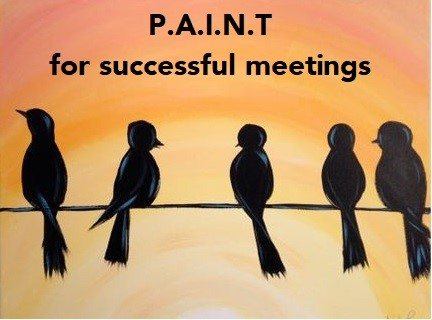I have worked in a hybrid team model for a long time. Some of my team members were based out of the same office and others from different locations. In the pandemic times, this has shifted to a 100% remote format with everyone working out of home for the past 6 months. How do you build a high-performance team in such an environment? That is the million-dollar question leaders face.
The good news is that many of the basics of building a team haven’t changed, however they need modification and some new tenets need to be embraced. Below is a framework for building what we call a G.R.E.A.T. Virtual team.
Goals
Table of Contents
As the cliché goes, it is important for teams to know their clear goals. However, in a virtual environment, this step has a few more dimensions to keep in mind. The chances of team members not understanding the team goals are even more virtually. It is important for leaders to overcommunicate about the goals for the team and more importantly the Why? of that goal. For most team members, linking the goal to a larger purpose or impact it has can be a big motivator in their pursuit of the same.
This HBR Article delves into the risks that leaders need to keep in mind – of being too focused on the tactical vs strategic.
” When you’re working remotely, it’s easy to focus solely on the tactical, to stay glued to your computer, fielding email after email, in an earnest, unorganized fashion. With your to-do list looming in front of you, and no colleagues to pull you out of your head, you may be tempted to stay buried in the weeds. But people rely on leaders for direction, especially during uncertain times.”
Roles and Tasks
In a team, each member would be playing multiple roles. In our organization, we use the nomenclature of first hat and second hat to differentiate this. First hat is your core work for which you are held accountable for on a regular basis. The second and third hats are the ones which are not your core work but are also crucial to the overall team goals. The distinction itself can be useful for people to be watchful of their priorities to do their role effectively. In a virtual team, this assumes critical importance.
Considering the avalanche of conference calls and video meetings that team members go through, team member often find themselves pulled in opposite directions while prioritizing their time. For each team member, it is important to identify the tasks that are leading towards achieving the team goals. And, also the ones that do not contribute towards it. The reality is that most people are terrible at managing the demands on their time. The coaching that the team leaders can provide in helping them manage this piece, can bring about significant impact on team performance.
Empathy
The importance of empathy in a virtual team cannot be overstressed. Team members are juggling multiple hats at home and work in the current environment. Giving team members flexibility by being more empathetic to their situation, is a crucial element. This can be done even while setting simple team norms.
For example, if your regular weekly meetings have mandatory video, then you could keep that optional for a few of the others. Being more empathetic to a parent, someone who is the primary caregiver to an elderly parent, are all situations that team members grapple with today. Your leadership style would need to be nimble to manage different people differently and prioritize well being by being more empathetic. Organizations like Google are leading the way in this, by giving an additional day off for wellbeing.
Accountability
Building an environment of accountability is a critical success factor for high performance virtual teams. Leaders need to be careful while setting team norms in this regard. One of the common mistakes we see is too much focus on productivity with lesser emphasis on results. It really shouldn’t matter if a team member works 6 hours or 8 hours as long as they stick to deliverables. Yet many managers seem fixated on measuring productivity metrics and hoping that it will solve for the conundrum of accountability.
This does not mean however, that there are no team norms needed. For example, sticking to time on virtual meetings and checking in on a team tracker may be some of the basic norms that would need to be in place. The key is to only measure indicators that lead to progress, in pursuit in goals.
This interesting HBR article talks about building a team rhythm –
“When some or all the members of a team are working separately, it’s all-too-easy to get disconnected from the normal rhythms of work life. One antidote is to be disciplined in creating and enforcing rhythms in virtual team work. This means, for example, having regular meetings, ideally same day and time each week. It also means establishing and sharing meeting agenda in advance, having clear agreements on communication protocols, and starting and finishing on time.”
Tribe
If you ask most virtual teams what they miss the most about working from office, you are likely to see one common trend – social interaction and a sense of community. The psychological impact of the informal conversations, watercooler chats cannot be underestimated. Leaders need to be mindful of looking for opportunities to encourage a sense of community in their virtual teams. Virtual Team building sessions can be a great way to encourage informal interaction.
Compared to traditional team offsites and retreats, we suggest keeping these shorter (not more than 2 hours) so that it does not give people a feeling of “another work thing” and reduces screen time. This case study from Wharton is a fascinating story of how they managed to bring a sense of belonging in pandemic times to the new admits. Similarly, many of the office rituals can still be modified into virtual format, like team lunches, Fun Fridays etc. and they do make a difference to team morale.
What has been your experience in managing a virtual team? Do join the conversation.














